Related Research Articles

Winterthur Museum, Garden and Library is an American estate and museum in Winterthur, Delaware. Winterthur houses one of the richest collections of Americana in the United States. The museum and estate were the home of Henry Francis du Pont (1880–1969), Winterthur's founder and a prominent antiques collector and horticulturist.
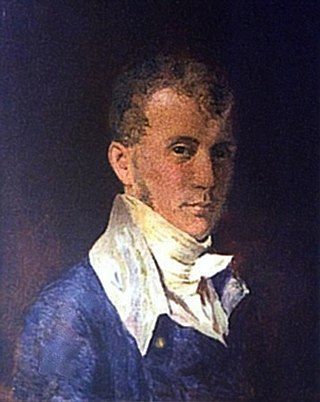
Duncan Phyfe was one of nineteenth-century America's leading cabinetmakers.

Henry Francis du Pont was an American horticulturist, collector of early American furniture and decorative arts, breeder of Holstein Friesian cattle, and scion of the powerful du Pont family. Converted into a museum in 1951, his estate of Winterthur in Delaware is the world's premier museum of American furniture and decorative arts.
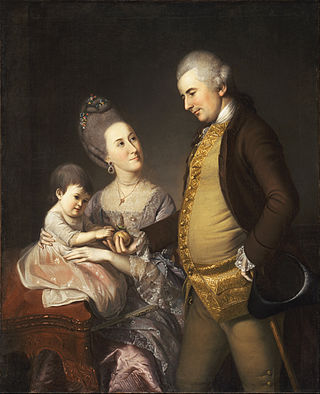
Thomas Affleck (1740–1795) was an 18th-century American cabinetmaker, who specialized in furniture in the Philadelphia Chippendale style.

Charles-Honoré Lannuier, French cabinetmaker (1779–1819), lived and worked in New York City. In Lannuier's time, the style of his furniture was described as "French Antique." Today, his work is classified primarily as Federal furniture, Neoclassical, or American Empire.

Daniel Pabst was a German-born American cabinetmaker of the Victorian Era. He is credited with some of the most extraordinary custom interiors and hand-crafted furniture in the United States. Sometimes working in collaboration with architect Frank Furness (1839–1912), he made pieces in the Renaissance Revival, Neo-Grec, Modern Gothic, and Colonial Revival styles. Examples of his work are in the collections of the Metropolitan Museum of Art, the Philadelphia Museum of Art, the Art Institute of Chicago, and the Victoria and Albert Museum in London.
Jonathan Leo Fairbanks is an American artist and expert of American arts and antiques. Fairbanks created the American Decorative Arts and Sculpture department at the Museum of Fine Arts, Boston, and served as Curator of the department from 1970 to 1999.
Ralph Emerson Carpenter Jr. was a conservationist, Colonial furniture expert and author. A descendant of the noted Carpenter founding family of colonial Rhode Island, for more than a half century, he was actively involved in the restoration of some of Newport, Rhode Island's defining structures.

Kimbel & Cabus was a Victorian-era furniture and decorative arts firm based in New York City. The partnership was formed in 1862 between German-born cabinetmaker Anthony Kimbel and French-born cabinetmaker Joseph Cabus (1824–1894). The company was noted for its Modern Gothic and Anglo-Japanese style furniture, which it popularized at the 1876 Centennial Exposition.
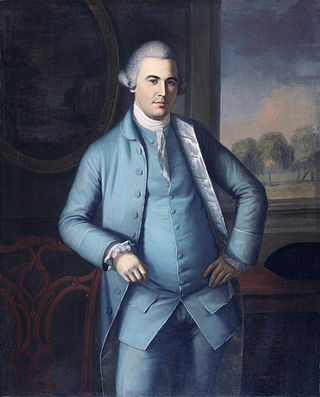
Benjamin Randolph (1721—1791) was an 18th-century American cabinetmaker who made furniture in the Queen Anne and Philadelphia Chippendale styles. He made the lap desk on which Thomas Jefferson drafted the Declaration of Independence.
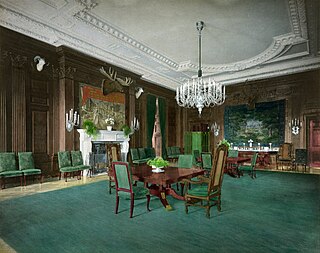
A. H. Davenport and Company was a late 19th-century, early 20th-century American furniture manufacturer, cabinetmaker, and interior decoration firm. Based in Cambridge, Massachusetts, it sold luxury items at its showrooms in Boston and New York City, and produced furniture and interiors for many notable buildings, including The White House. The word "davenport," meaning a boxy sofa or sleeper-sofa, comes from the company.

The Campeche is a reclining, non-folding, sling-seat chair with a distinctive side-placed curule base. In North America, they are named for the Campeche region of Mexico's Yucatán Peninsula, and were popular in the Americas during the early nineteenth century. Similar versions of the form are found throughout Europe, such as the Schinkel writing chair at Schloss Charlottenburg in Berlin. Other related forms include the "planter's chair" or "bootjack" which is associated with equatorial climes and plantation-based societies.
Charles Franklin Montgomery, was an American curator, art historian, scholar, educator, and museum director. He served as the first director of the Henry Francis du Pont Winterthur Museum, from 1954 to 1961. After continuing to work at the museum as a senior research fellow, he was a curator and art historian at Yale University from 1970 until his death.
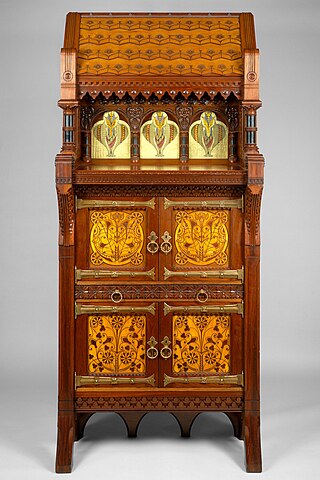
Modern Gothic exhibition cabinet is a piece of Modern Gothic furniture now in the collection of the Metropolitan Museum of Art. Although its design was once attributed to Philadelphia architect Frank Furness and furniture maker Daniel Pabst, MMA now credits its design and manufacture to Pabst alone. At 8 feet (2.4 m) tall, it is an unusually large and polychromatic American example of the rare style.
Daniel Trotter (1747-1800) was an American furniture maker.
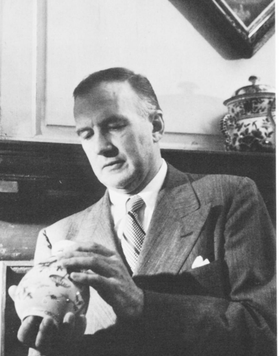
Joseph Downs was an American museum curator and scholar of American decorative arts. After 17 years at the Metropolitan Museum of Art, Downs became founding curator of the Winterthur Museum, Garden and Library from 1949 to 1954. His assistant, Charles F. Montgomery, became Winterthur's first director after Downs' death.
Leslie Greene Bowman is an American museum administrator and decorative arts historian who has served as president of the Thomas Jefferson Foundation, which owns and runs Monticello, since 2008. She previously worked in progressively responsible curatorial roles at the Los Angeles County Museum of Art (1980–1997) and served as director of the National Museum of Wildlife Art (1997–1999) and Winterthur Museum, Garden and Library (1999–2008).

Israel Sack was a Lithuanian American antiques dealer specializing in early American furniture. Sack was instrumental in developing the private collections of Henry Ford, Henry Francis du Pont, Ima Hogg, and other leading collectors and supplying the Americana collections of "virtually every major museum in the country" per The New York Times. According to The Washington Post, Sack's firm was "reputed to have invented the American antique market."
John A. H. Sweeney was an American curator, scholar, and writer specializing in the American decorative arts. He spent his career in curatorial and leadership positions at the Winterthur Museum, Garden and Library.

Martha Lou Gandy Fales was an American art historian, museum curator, and author specializing in historic American silversmithing and jewelry. She worked as a curator and keeper of the silver at the Winterthur Museum, Garden and Library during the late 1950s and worked mostly as an independent historian and consultant after that. Her seminal book Jewelry in America (1995) received the Charles F. Montgomery Prize from the Decorative Arts Society.
References
- 1 2 3 4 5 6 Peck, Amelia (Spring 2011). "Morrison H. Heckscher: 2011 ADA Award of Merit Recipient" (PDF). Antiques & Fine Art: 70–72. Archived (PDF) from the original on 2022-09-26.
- 1 2 Beach, Laura (2011-04-01). "Lord of the Wing: Morrison H. Heckscher" (PDF). Antiques and the Arts Weekly : 1, 32–34. Archived (PDF) from the original on 2022-09-26.
- 1 2 3 4 "Morrison H. Heckscher to Become Curator Emeritus After Leading American Wing for 13 Years and Distinguished 48-Year Tenure at Metropolitan Museum; Sylvia L. Yount Appointed to Head American Wing". Metropolitan Museum of Art. 2014-06-11. Archived from the original on 2022-09-26. Retrieved 2022-09-26.
- 1 2 "The Wunsch Americana Foundation Announces the Fourth Annual Eric M. Wunsch Award for Excellence in the American Arts Honoring Morrison H. Heckscher and Peter M. Kenny" (PDF). Christie's . 2015-12-17. Archived (PDF) from the original on 2021-10-20. Retrieved 2022-09-25.
- ↑ Vuocolo, Alex (2016-12-01). "Winterthur Trustees to Honor Heckscher". Delaware Business Times. Archived from the original on 2022-09-26. Retrieved 2022-09-26.
- 1 2 "Morrison H. Heckscher: ADA Award of Merit Recipient". Antiques Dealers Association. 2011. Archived from the original on 2022-09-26. Retrieved 2022-09-26.